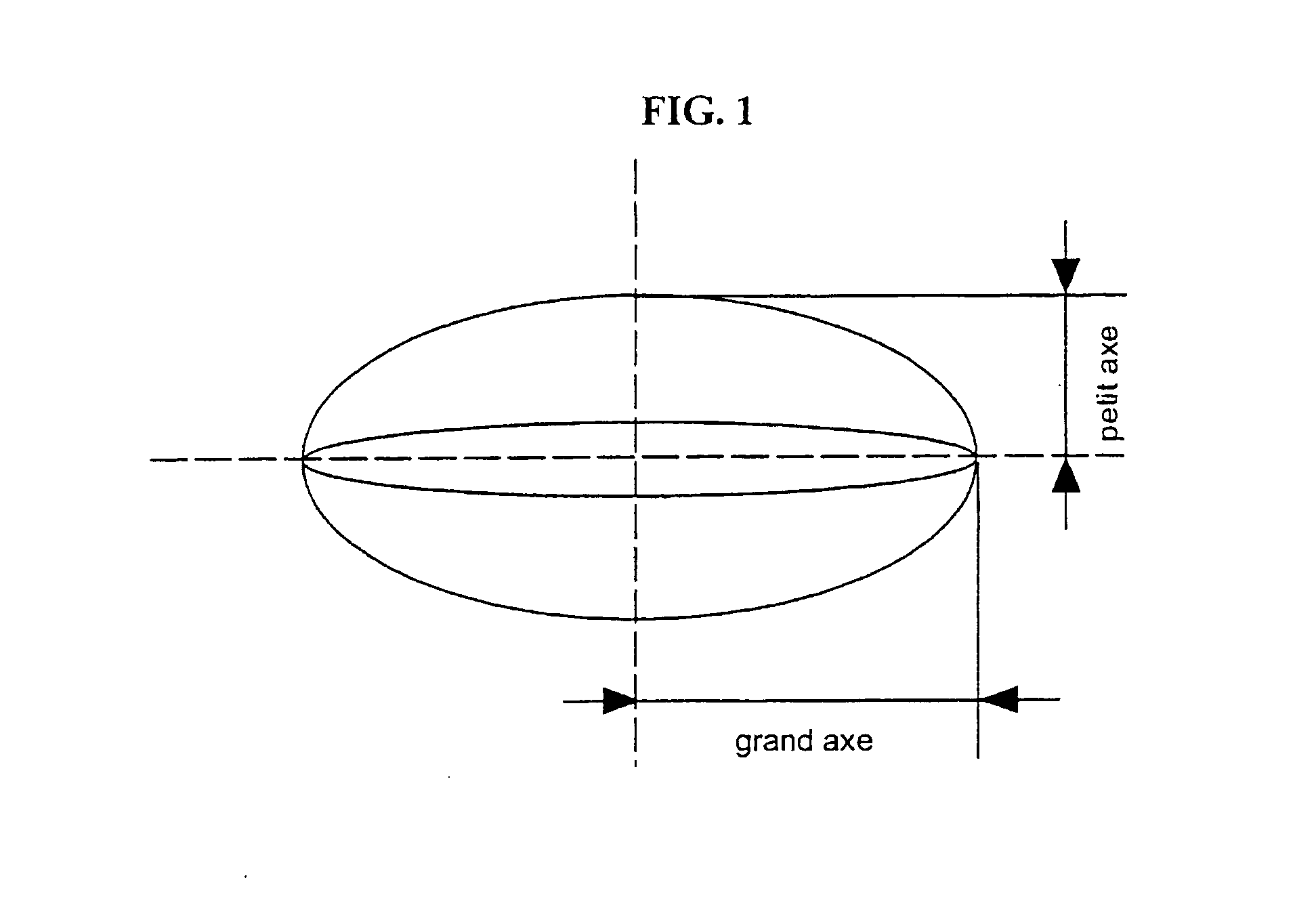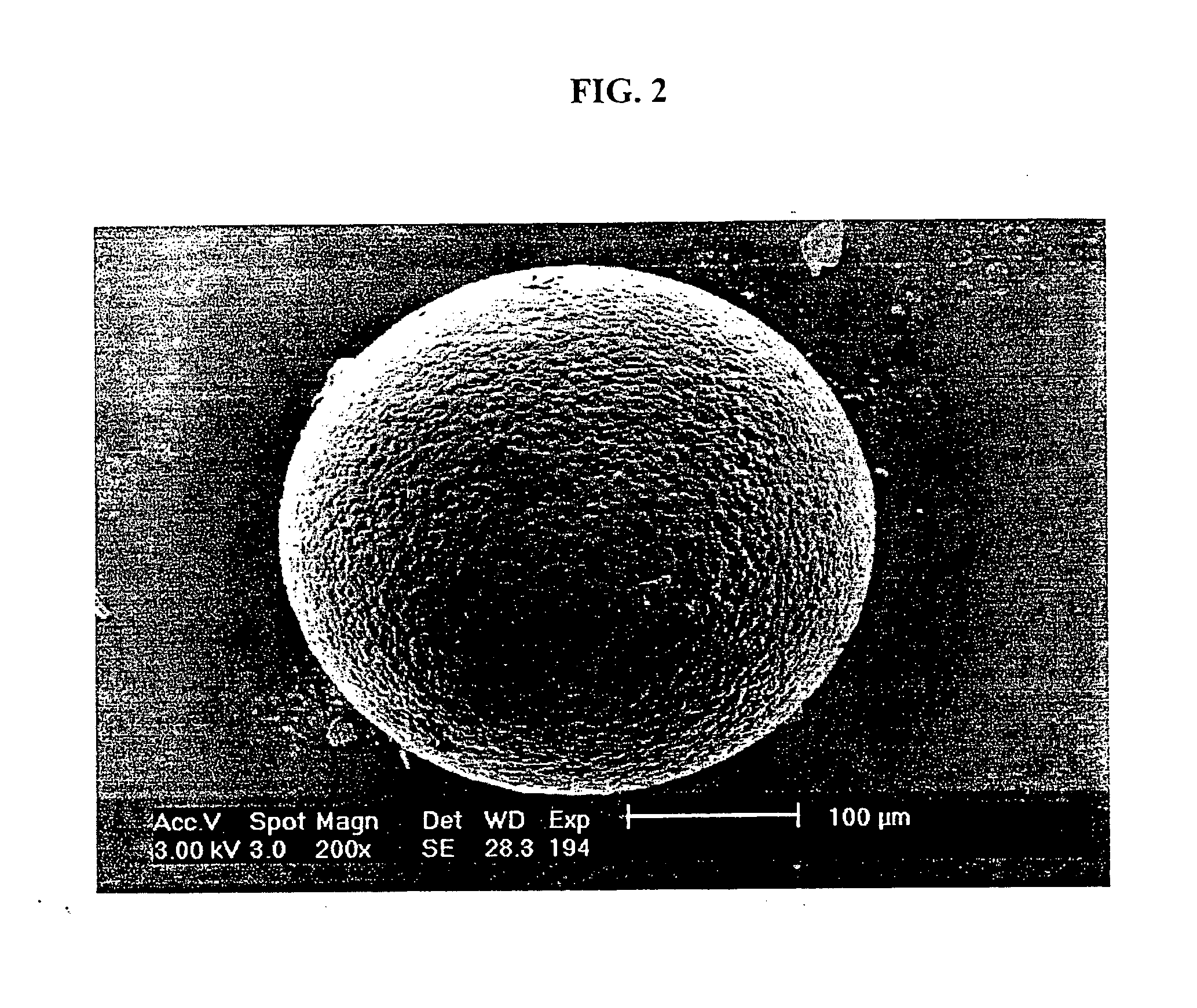Calcium phosphate microgranules
a technology of calcium phosphate and microgranules, applied in the field of calcium phosphate microgranules, can solve the problems of insufficient granules for use as carriers of controlled drug release, poor control of release rate, and process inability to produce granules
- Summary
- Abstract
- Description
- Claims
- Application Information
AI Technical Summary
Problems solved by technology
Method used
Image
Examples
example 1
[0026] Ceramic Microgranules Made of .beta.-Tricalcium Phosphate.
[0027] An aqueous granulation suspension incorporating powdered .beta.-tricalcium phosphate (.beta.-TCP), poly(acrylic acid) (PAA) and sodium alginate (Na-alginate) is prepared for the production of ceramic .beta.-TCP microgranules. The pH of said suspension is adjusted between 8 and 9 by addition of ammonia. Each liter of said suspension contains:
[0028] 1,152 g of .beta.-TCP powder
[0029] 3.13 g of PAA
[0030] 24.2 g of Na-alginate
[0031] 593 g of demineralized water.
[0032] Said suspension is flowed through a 200 micrometer diameter nozzle vibrated at a frequency comprised between 2,000 and 3,000 Hz. The formed droplets take their spherical shape while falling through a column. Said droplets are collected in an 2% weight CaCl.sub.2 aqueous solution at ambient temperature, and pre-consolidated for 20 min in said solution in the form of microbeads. Said microbeads are then washed in plain water and subsequently dried in a r...
example 2
[0033] Ceramic Microgranules Made of Hydroxyapatite
[0034] An aqueous granulation suspension incorporating powdered hydroxyapatite (HAp), poly(acrylic acid) (PAA) and sodium alginate (Na-alginate) is prepared for the production of ceramic hydroxyapatite microgranules. The pH of said suspension is adjusted between 8 and 9 by addition of ammonia. Each liter of said suspension contains:
[0035] 1,087 g of HAp powder
[0036] 4.04 g of PAA
[0037] 5.23 g of Na-alginate
[0038] 644 g of demineralized water.
[0039] Said suspension is flowed through a 350 micrometer diameter nozzle vibrated at a frequency comprised between 1,000 and 1,500 Hz. As for Example 1, the formed droplets are collected in an 2% weight CaCl.sub.2 aqueous solution at ambient temperature, and pre-consolidated for 30 min in said solution in the form of microbeads. Said microbeads are then washed in plain water and subsequently dried in a rotating evaporator operated at 60.degree. C. Said dried microbeads show a median diameter of...
example 3
[0040] Microgranules Made of Hydroxyapatite Cement
[0041] An aqueous granulation suspension incorporating a stoichiometric mixture of powdered anhydrous dicalcium phosphate (DCP) and calcite (CC), poly(acrylic acid) (PAA) and sodium alginate (Na-alginate) is prepared for the production of hydroxyapatite cement microgranules. The pH of said suspension is adjusted between 8 and 9 by addition of ammonia. Each liter of said suspension contains:
[0042] 532.9 g of DCP powder
[0043] 261.3 g of CC powder
[0044] 130.1 g of HAp powder
[0045] 13.4 g of PAA
[0046] 5.50 g of Na-alginate
[0047] 6461.8 g of demineralized water.
[0048] Said suspension is flowed through a 150 micrometer diameter nozzle vibrated at a frequency comprised between 2,000 and 3,000 Hz. As for Examples 1 and 2, the formed droplets are collected in an 2% weight CaCl.sub.2 aqueous solution at ambient temperature, and pre-consolidated for 30 min in said solution in the form of microbeads. Said microbeads are then washed in plain wate...
PUM
| Property | Measurement | Unit |
|---|---|---|
| porosity | aaaaa | aaaaa |
| porosity | aaaaa | aaaaa |
| diameters | aaaaa | aaaaa |
Abstract
Description
Claims
Application Information
 Login to view more
Login to view more - R&D Engineer
- R&D Manager
- IP Professional
- Industry Leading Data Capabilities
- Powerful AI technology
- Patent DNA Extraction
Browse by: Latest US Patents, China's latest patents, Technical Efficacy Thesaurus, Application Domain, Technology Topic.
© 2024 PatSnap. All rights reserved.Legal|Privacy policy|Modern Slavery Act Transparency Statement|Sitemap


